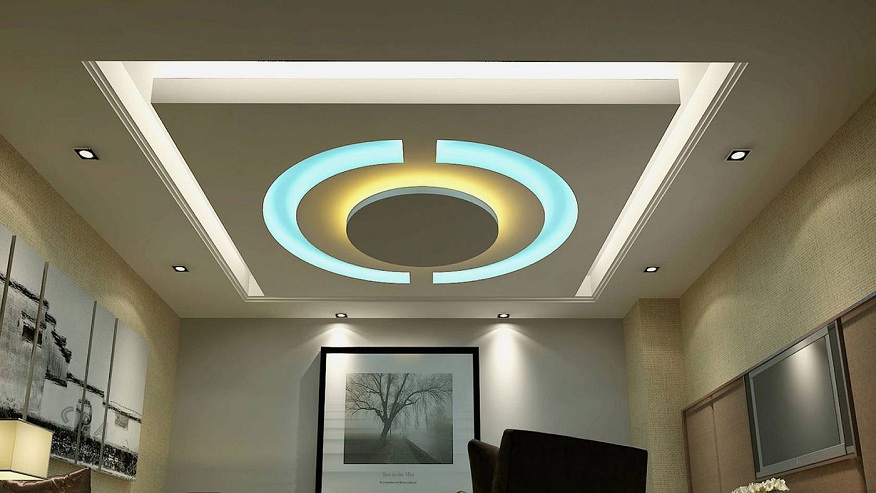Are you considering giving your basement a much-needed makeover? One of the most impactful yet often overlooked aspects of basement renovation is the false ceiling design. The false ceiling colour combination you choose can dramatically transform your home interior design, making it feel brighter, larger, or cozier depending on your preference. However, with virtually endless color options available, deciding on the perfect shade can be a daunting task.
In this blog post, we’ll provide insights into how different hues can influence the perception of your space and share tips to help you make the best choice for your unique basement. Whether you’re aiming for a modern, minimalist look or a warm, rustic vibe, we’ve got you covered.
Let’s dive in and uncover the potential of choosing the right false ceiling colour combination!
Are You Painting the Basement Ceiling the Same Color as the Walls?
When it comes to painting your basement, an important consideration is whether to paint the ceiling the same color as the walls. This decision largely depends on the desired aesthetic and the specific characteristics of your basement space.
Choosing the same color for both the ceiling and walls can create a uniform, cohesive look that imparts a sense of spaciousness. This approach is particularly beneficial in basements with lower ceilings, as it helps to minimize visual disruption and make the room feel larger.
However, opting for a contrasting color can add depth and interest to your basement, making it a visually appealing space. If you have high ceilings or want to highlight architectural details, a different color for the ceiling might be the ideal choice.
In fact, both approaches have their merits, and the best choice depends on your design goals, personal preferences, and the unique features of your basement.
Lighter Basement Ceilings, Darker Walls
When it comes to designing your basement, color choices can significantly impact the overall ambiance of the space. One effective strategy is to opt for lighter colors on the ceiling and darker shades on the walls.
A lighter ceiling can help to create an illusion of height, making the basement feel more spacious and airy. This is particularly beneficial in basements with low ceilings, where a sense of openness can counteract the potentially claustrophobic effect of confined spaces.
On the other hand, darker walls can add depth and richness to your basement, creating a cozy and inviting atmosphere. Darker colors are also excellent at hiding imperfections, which can be a common issue in basements.
This combination of light and dark can provide a balanced, harmonious aesthetic that enhances both the functionality and appeal of your basement. However, it’s important to consider the specific characteristics of your space and tailor your color choices accordingly to achieve the best results.
Darker Ceiling, Darker Walls
Opting for a darker ceiling and darker walls in your basement can create a bold and dramatic aesthetic, offering an intriguing alternative to traditional lighter color schemes. This approach, often used in home theaters or lounges, can evoke a sense of intimacy and coziness, making your basement a welcoming retreat.
A darker palette can also help conceal common basement blemishes, such as pipes, ducts, and any irregularities in the ceiling or walls. Additionally, it can accentuate architectural elements of your home interior design, giving the room a distinctive character.
When choosing this design route, it’s crucial to consider your basement’s lighting. Strategic placement of light fixtures is essential to prevent the space from feeling too enclosed or overwhelming. Incorporating mirrors or reflective surfaces can also help bounce light around the room and offset the darkness.
The choice of color for your basement’s ceiling and walls significantly influences the overall aesthetic and feel of home interior design. Whether you opt for a uniform color scheme, lighter ceilings with darker walls, or a bold all-dark palette, each approach offers unique benefits and creates different effects on your false ceiling design. So, the key is to consider the specific characteristics of your false ceiling design, the amount of natural and artificial light available, and your personal design preferences. With careful planning and thoughtful design decisions, you can transform your basement into a space that is not only functional but also visually appealing and enjoyable to spend time in.

